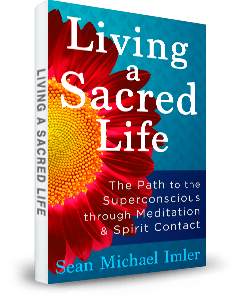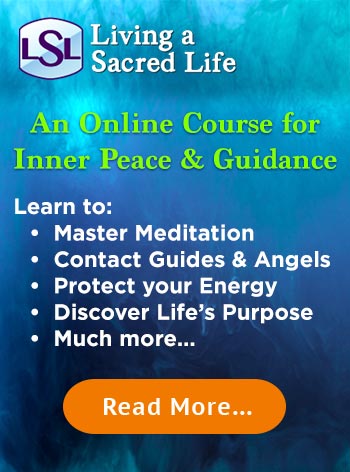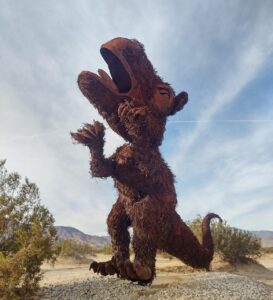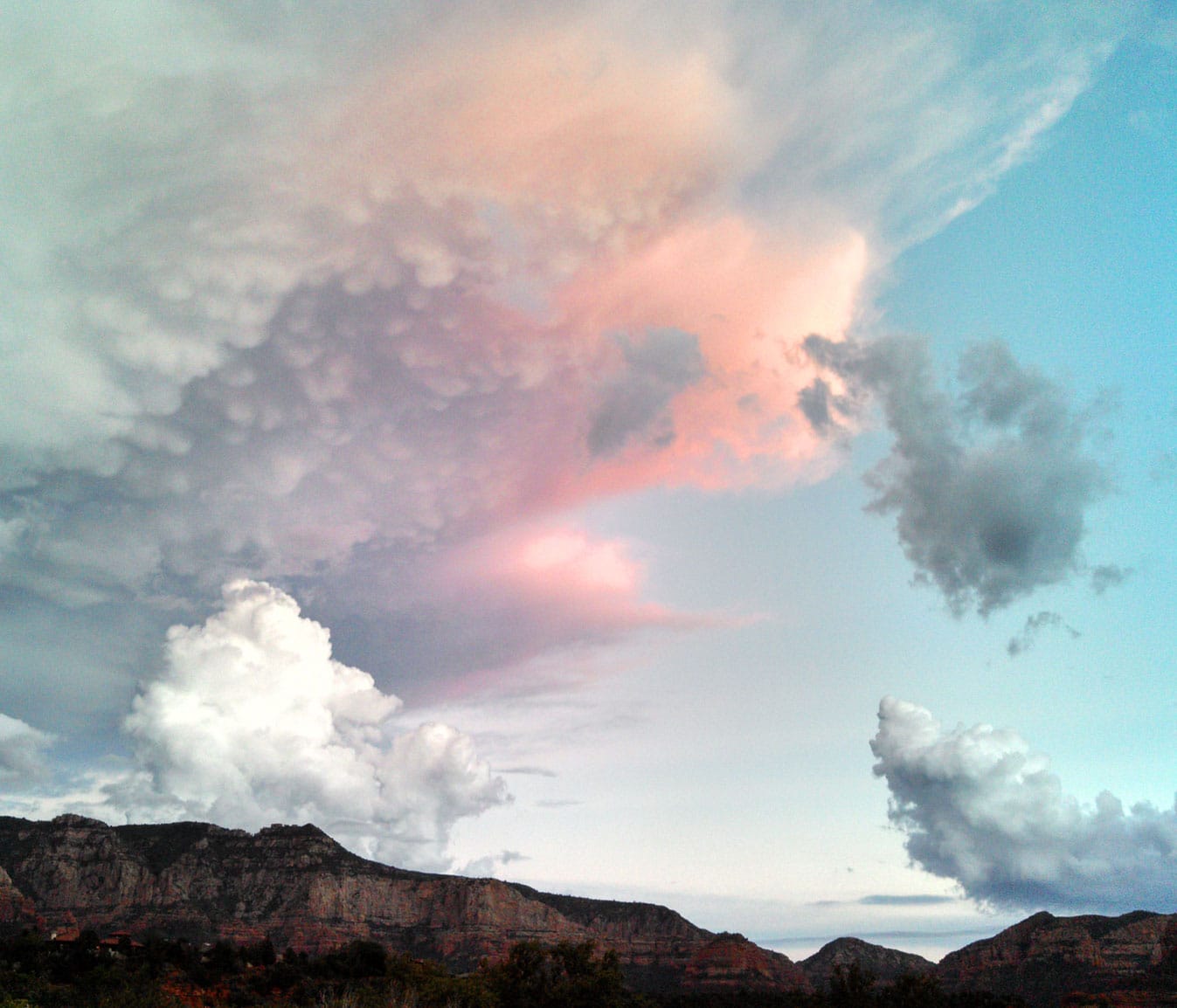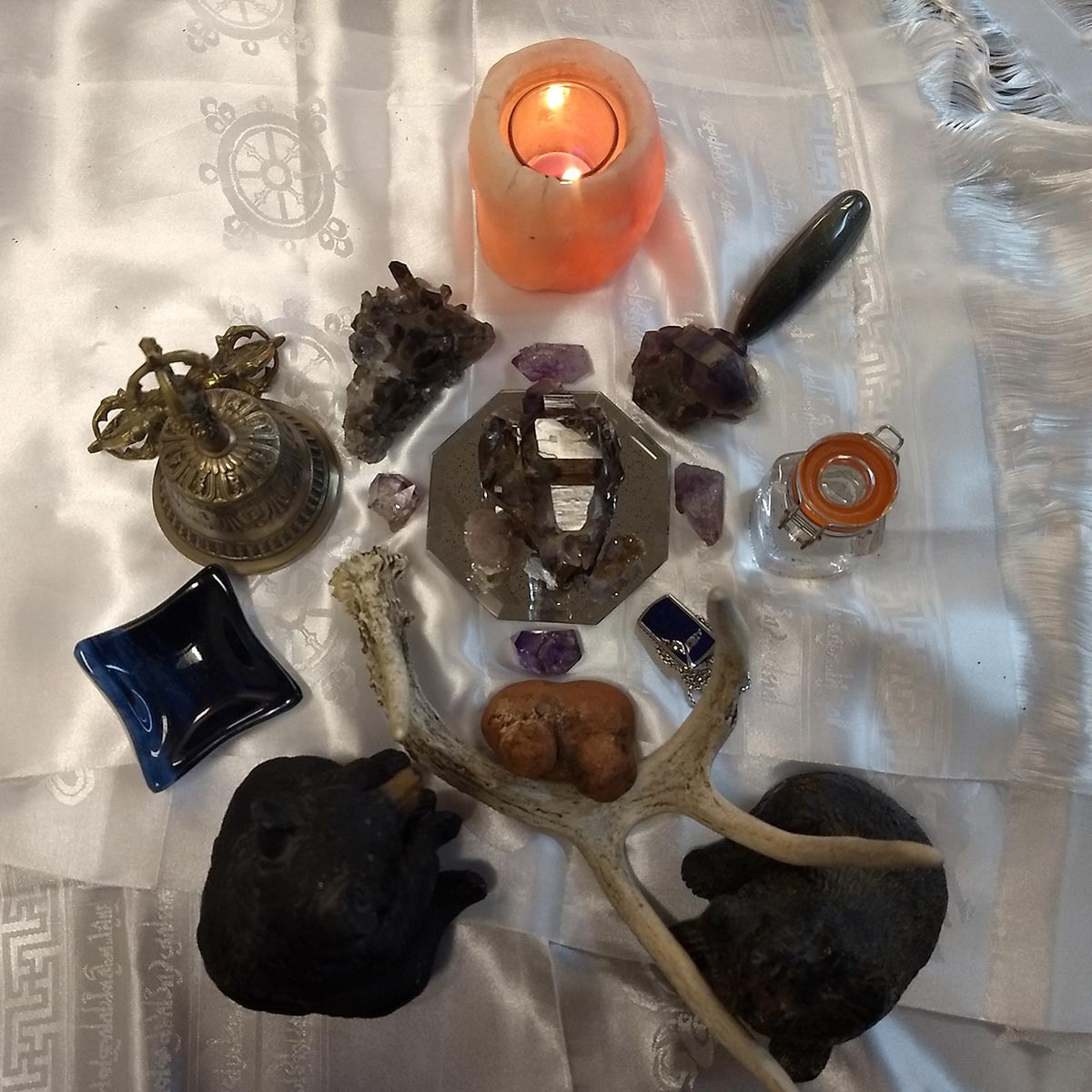As we embark on the journey of self-discovery, I believe it becomes absolutely essential to understand the intricacies of our own existence. One such fundamental aspect lies in knowing and understanding the concept of the soul, and being able to differentiate it from other profound concepts like that of the Higher Self.
Contents
Overview of the Soul
The soul is often envisioned as a spiritual entity, an eternal aspect of our being that continues to exist beyond our mortal life. The concept of the soul is deeply rooted in religious, philosophical, and psychological traditions around the world. It is often associated with our consciousness, our personality, and our sense of morality.
If you’d like to read comparative analysis of what religions believe in a soul, read “Get to Know Buddhism By Simple Comparison.”
On the other hand, the idea of the Higher Self is a relatively modern concept, a product of New Age spirituality and metaphysics, often seen as an extension or evolution of the concept of the soul.
Understanding the distinctions and the connections between these two concepts, I argue, is not just an academic exercise. It can significantly enhance our understanding of ourselves, our purpose, our aspirations, and our place in the universe. It can also guide us on our spiritual journey, providing us with a roadmap, a compass, and a destination.
- The Soul, in its purest form, is believed to be the essence of who we are, carrying our memories, establishing our life objectives, and guiding our moral compass. It is seen as the divine spark within us, the part of us that is eternal and unchanging.
- The Higher Self, on the other hand, is seen as a more evolved, more enlightened version of ourselves. It is believed to be a higher state of consciousness that we can aspire to reach, a state of being where we can connect with our soul, the divine, with the universe, and with our true potential.
By exploring these concepts, by asking the right questions, and by seeking the answers within ourselves, we can embark on a journey of self-discovery, self-improvement, and spiritual growth. That’s the power of understanding the soul and the Higher Self.
The Search for Meaning: Understanding the Higher Self and the Soul
In our pursuit of existential understanding, we invariably stumble upon the concepts of the “higher self” and “soul.” Both terms are deeply rooted in metaphysical and philosophical discussions, often creating a sense of mystery and awe. Yet, while intertwined in our human quest for meaning, they are not synonymous and hold distinct connotations.
Origins of Higher Self
Let’s first delve into the origins of the term “higher self.” This concept, predominantly influenced by theosophy (a spiritual movement that emerged in the late 19th century), is believed to denote our divine essence, our spiritual element that transcends our physical existence. Helena Blavatsky, a founding member of the Theosophical Society, described the higher self as our true spiritual identity, unimpeded by the constraints of the material world. It is an embodiment of wisdom, compassion, and peace – the epitome of our potential as spiritual beings. The idea has further permeated various spiritual traditions, including Hinduism, Buddhism, and New Age thought, each offering its unique interpretation but commonly emphasizing self-transcendence and unity with the divine cosmos.
“The Higher Self is the blissful actuality of ourselves beyond the annoying, limited prison of the body. It is more than the silence, more than the stars, and more than the light.” – Frederick Lenz.
Origins of Soul
Contrastingly, the term “soul” has a broader, more universal application, spanning across diverse cultures, religions, and philosophies. The soul is considered the immortal essence of a being, the eternal part that survives physical death. It is our life force, often associated with personal identity, consciousness, and individuality. Many religious beliefs view the soul as the moral compass guiding our actions, with the potential for growth, purification, and salvation, or degradation based on our earthly conduct. While some traditions present the soul as a divine spark within us, others perceive it as a distinct entity that reincarnates, learns, and evolves through multiple lifetimes.
So, how do these concepts compare? Both the higher self and the soul are expressions of our spiritual nature, transcending physicality and mortality. They constitute the central themes in our pursuit of existential understanding, personal growth, and spiritual enlightenment. However, they differ in their subtleties and implications.
- Scope and Emphasis: The higher self primarily emphasizes our divine potential and unity with the cosmos, urging us to transcend our lower nature and realize our innate divinity. In contrast, the soul often focuses on individual existence, personal identity, moral conduct, and life after death.
- Centrality in various traditions: While the higher self is a key concept in theosophy and certain spiritual traditions, the soul is more universally acknowledged across diverse religions and philosophies.
- Perceived Role: The higher self is often seen as a guide or mentor, helping us navigate our spiritual journey. The soul, on the other hand, is typically seen as the traveler on this journey, learning, growing, and evolving through experiences.
Higher Self vs Self Soul: What’s the Difference?
To truly distinguish between the concept of the higher self and the soul, we first need to delve into the origins and meanings of these two terms (an adventure that requires us to traverse through time, across cultures, and into the depths of spirituality). To navigate this journey, we must first understand that these concepts, while similar in some respects, stem from slightly different spiritual and philosophical traditions.
The Origins of the Higher Self
The term ‘Higher Self’, as we understand it today, has its roots in Theosophy, a spiritual movement that emerged in the late 19th century. Theosophists, such as Helena Blavatsky, described the Higher Self as an eternal, omnipotent, conscious, and intelligent being, which is our real self (our inner divinity, so to speak).
However, it would be unwise to think that the concept of the Higher Self is solely a product of Theosophy. In truth, it echoes ideas present in various cultures and religions. For instance, in Hinduism, the Atman or the ‘self’ is considered to be the eternal, unchanging aspect of a person, which is identical to Brahman, the ultimate reality. Similarly, in Buddhism, the concept of Buddha nature is seen as a potential within all beings to reach enlightenment, which could be likened to the idea of the Higher Self.
The Soul and Its Roots
Moving on to the soul, it’s a concept that has been prevalent in many religious, philosophical, and spiritual traditions throughout history. In Christianity, the soul is seen as the immortal essence of a person, created by God, which continues to exist after death. In Islamic tradition, the soul (or ‘Ruh’) is the divine spark which gives life to the physical body. Meanwhile, in classical philosophy, the soul was viewed as the vital, animating principle in living beings.
Comparing the Higher Self and the Soul
So, how do the Higher Self and the soul compare? At first glance, these two concepts seem quite similar: they both represent an eternal, spiritual aspect of our being. However, there are some key differences. The Higher Self is often seen as the divine, perfect aspect of ourselves, our true spiritual identity that remains constant and unchanging. It’s like a guiding star, leading us towards our true purpose and highest potential. The soul, on the other hand, is often seen as the immortal essence that gains experience, learns, and evolves through multiple lifetimes.
“Your soul is not just your higher self; rather, your soul is all the experiences, knowledge, wisdom, and lessons that you have accumulated through numerous lifetimes. Your Higher Self, however, represents your ultimate potential, a blueprint of you at your most divine.”
So, while the soul learns and grows, the Higher Self remains constant, serving as a beacon of light guiding the soul on its journey. This distinction, subtle though it might seem, is what differentiates these two concepts, providing us with a more nuanced understanding of our spiritual nature.
To further explore the soul and its purpose, check out this online course, “Awakening to Your Soul’s Purpose“.
Also read, “Understanding Your Soul’s Purpose in Life.”
Higher Self vs Lower Self: Is There Such a Thing?
As we delve deeper into the realm of self-awareness, it’s impossible to ignore the theory of the Higher Self and Lower Self. This dichotomy, predating modern psychology, has been part of humanity’s spiritual discourse for millennia. But what exactly is this Higher Self and Lower Self? Are they real, or are they mere constructs of our imagination? Let me share my understanding.
The Higher Self (often called the Divine Self, True Self, or Spiritual Self) can be thought of as our ultimate form—our spiritual DNA, if you will. It’s that part of us that is eternally connected with the Divine or the ultimate reality, and it embodies wisdom, love, peace, and pure consciousness. It is the part of us that knows our true purpose and guides us toward it.
On the contrary, the Lower Self (also known as the Ego or False Self) is rooted in our physical reality. It’s the part of us that is driven by instincts, desires, and fears. It’s limited by our perceptions, conditioned by our experiences, and often trapped in past traumas or future anxieties.
Now, this isn’t to say that the Lower Self is ‘bad’ or ‘wrong.’ It’s essential to our survival and functioning in the world. It’s just that when we identify solely with our Lower Self, we limit ourselves, we become disconnected from our Higher Self, and we live a life that often feels unfulfilled. So, the key is balance—acknowledging and honoring both aspects of our being, but also learning to listen to our Higher Self more often.
The Higher Self
The term ‘higher self’ is derived from various spiritual traditions, particularly within the framework of esoteric and New Age philosophies. It is often used to denote the essence of a person, a transcendent, omnipresent aspect of self that remains constant despite the vicissitudes of life. This might be equated to what some refer to as the ‘soul’, but with a key distinction. The higher self is seen as a guide or inner wisdom, a part of us that is connected with the divine or the universe, and which can assist us in navigating life’s challenges.
The Lower Self
In contrast, the ‘lower self’ often signifies the more temporal, egoic aspect of our personality. It is associated with our desires, fears, and limitations. This ‘self’ is not negative per se, but can often become the source of suffering when it dominates our experience. It is the part of us that reacts, that feels threatened, and that seeks to protect and assert itself. The lower self, in essence, is our human experience, with all its flaws and beauty.
The Interplay
The interaction between the higher and lower self can be seen as an inner dialogue or conflict, where the lower self seeks immediate gratification, and the higher self encourages growth and long-term satisfaction. It’s important to note that this dichotomy doesn’t suggest that one is ‘better’ than the other; instead, it serves as a metaphor for understanding the different aspects of our being and their influences on our lives.
“The higher self and lower self are not opposing forces but complementary aspects of a balanced, integrated whole.”
~Anonymous
Difference and Similarity with the Soul
The higher self, as mentioned earlier, is quite similar to the concept of the soul in many spiritual and religious traditions. Both represent an immortal, divine aspect of our being. However, the higher self is more often seen as an accessible, guiding aspect of our consciousness, while the soul is often viewed as an eternal essence that transcends the individual personality. This distinction may seem subtle, but it has profound implications for how we understand ourselves and our relationship with the spiritual realm.
To sum up, the concepts of the higher self and lower self provide a valuable lens for understanding the human experience. They remind us that we are multidimensional beings, capable of growth, introspection, and transcendence. Understanding these aspects of our self can broaden our perspective and empower us to live more fulfilling and purposeful lives.
Higher Self vs Ego: The Origins of These Ideas
Before we delve deeply into this fascinating discourse, it’s crucial to understand the roots of these concepts, namely, the “higher self” and the “ego”. These ideas, while seemingly disparate, are both tied indelibly to our understanding of the self, and they’ve been explored extensively throughout human history in philosophical, spiritual, and psychological contexts.
The Origin of the “Higher Self”
For the term “higher self”, its origin is a tad more elusive when compared to the ego. It is most commonly found in esoteric and spiritual teachings. Theosophy, a spiritual movement that emerged in the late nineteenth century, often refers to the “higher self” as the divine spirit that resides in every individual.
It’s also worth mentioning that the idea of the “higher self” isn’t limited to Western esotericism. In Hindu philosophy, the concept of “Atman” — which is often translated as the “higher self” or “soul” — is a central tenet. The “Atman” is seen as the eternal, unchanging aspect of the self, untouched by the transient happenings of the physical world.
The Emergence of the “Ego”
As for the ego, this is a term that finds its roots firmly in the realm of psychology. Sigmund Freud, the father of psychoanalysis, was the first to define the ego as one of three components of the psyche, alongside the id (our primal desires) and the superego (our internalized moral standards). Freud’s ego is essentially our conscious mind, balancing the demands of the id and the superego, as well as reality.
Friedrich Nietzsche, the influential German philosopher, also contributed to our understanding of the ego. Nietzsche viewed the ego as a social construct, a fabricated identity shaped by societal expectations and norms. Both Freud and Nietzsche’s views on the ego have had a profound impact on contemporary psychology and philosophy, shaping our understanding of selfhood and personal identity.
Higher Self vs Ego: A Brief Comparison
Now that we’ve traced the origins of these two concepts, it’s time to juxtapose them. At a glance, the “higher self” and the “ego” might appear to be polar opposites. The “higher self” is often associated with our spiritual essence or divine core, existing beyond our physical reality. Conversely, the “ego” is usually tied to our conscious, earthly experience, embodying our perceived identity and the self we present to the world.
Yet, these concepts aren’t entirely in opposition. The “higher self” and the “ego” could be seen as two sides of the same coin, representing different aspects of the self. Our “higher self” might be viewed as our true, authentic self — the essence of who we are beyond societal conditioning and transient physical experiences. On the other hand, the “ego” encapsulates the self as it navigates through the physical world, dealing with everyday challenges and adhering to societal norms.
The nuances in the concepts of “higher self” and “ego” can offer profound insights into our understanding of the self and provide a unique lens to explore our spiritual and psychological dimensions.
Higher Self vs Divine Self: The Idea of Divinity
Although frequently interchanged, the concepts of the Higher Self and the Divine Self are not identical. They are two distinct yet interconnected aspects of spiritual consciousness. To comprehend this, it’s crucial to delve into the nuances of each term, to discern the distinctions, as well as the points of convergence.
The Higher Self
The Higher Self denotes an eternal, omnipotent, conscious, and intelligent being. This being is our real self (according to theosophy), and is seen as a sort of intermediary between our earthly self and the Divine Self (the ultimate source of all existence). It is a transcendent aspect of ourselves, not typically accessible in our everyday consciousness but can be reached through spiritual practices such as meditation and introspection.
The Divine Self
On the other hand, the Divine Self, often also referred to as God-Self, denotes the pure, undifferentiated consciousness that pervades all of creation. It is the source from which all individualized Higher Selves originate, and to which they will eventually return. The Divine Self is pure love, truth, and wisdom, and it exists beyond the constraints of time and space.
While both terms are related to our spiritual nature, the Higher Self is essentially a part of the Divine Self that has become individualized to embark on its own unique journey of self-discovery and evolution. It is like a wave in the ocean, distinct yet inseparable from the ocean itself (the Divine Self). In this sense, the Higher Self is to the Divine Self what the soul is to Spirit. This is where the similarities between the Higher Self and the soul come into play.
The Higher Self is to the Divine Self what the soul is to Spirit.
Proximity to Divinity
Both the Higher Self and the soul are individualized aspects of the Divine, both are eternal and both journey through various lifetimes for the purpose of learning, growing, and evolving. However, where they differ is in their level of consciousness and their proximity to the Divine Source. The soul is closer to our human experience and operates at a lower level of consciousness than the Higher Self. It includes our personality and our personal history in this lifetime and past lifetimes. The Higher Self, on the other hand, operates from a higher level of consciousness and maintains a closer connection to the Divine Self.
In a way, you can think of your Higher Self as a bridge between your human self (including your soul) and your Divine Self. It aligns with your soul’s path and helps guide you towards the lessons and experiences your soul needs for its evolution. It is the voice of wisdom and love that whispers to you in quiet moments, urging you towards your highest good.
Understanding these distinctions can greatly enhance your spiritual journey, as it invites a clearer understanding of who you truly are, and the divine potential that lies within you. By aligning with your Higher Self, you can more effectively navigate your earthly journey, and more fully embody the love, truth, and wisdom of your Divine Self.
Higher Self vs Spirit Guide: Which is Which
In the realm of spiritual development, the terms ‘Higher Self’ and ‘Spirit Guide’ often arise, each carrying its own unique connotations, but both integral to the journey of self-realization. Despite their shared significance, however, it is essential to distinguish between the two concepts for a clearer understanding of your spiritual path.
The Higher Self is an extension of your own consciousness, but existing on a higher vibrational plane. This is not a separate entity, but rather a fuller, more enlightened version of you – one that is free from the constraints of your ego, your past experiences, and your societal conditioning. It is the part of you that is innately wise and compassionate, capable of guiding you towards your highest potential.
On the other hand, the Spirit Guide, denotes a distinctive entity, often perceived as a guardian or mentor in the spirit world. Historically, many cultures and religions (such as Native American traditions and Hinduism) have long held beliefs in the existence of these spiritual entities, viewing them as a source of wisdom and guidance. Unlike the Higher Self, Spirit Guides are not a higher form of your own consciousness, but rather separate beings that aid you throughout your life journey.
How to Distinguish the Two
So, how do we distinguish between the voice of the Higher Self and the guidance of a Spirit Guide? Well, it often comes down to a matter of intuition. The Higher Self often communicates through feelings of ‘knowing’ or sudden realizations (the proverbial ‘light bulb’ moments), and are an intrinsic part of our conscious awareness. Spirit Guides may communicate through signs, symbols, dreams, and even through the voices of others. They usually communicate when called upon. It is a deeply personal and subjective experience, different for everyone.
In essence, both the Higher Self and Spirit Guides serve a similar purpose: to guide you, to inspire you, and to aid you in navigating your spiritual journey. However, they are not interchangeable terms and understanding the distinction between them can enrich your spiritual understanding and experience.
It is important to note that the relationship between you and your Higher Self, as well as your Spirit Guides, is symbiotic. You draw wisdom and guidance from them, but they also grow and evolve through your experiences. This is the beautiful cycle of spiritual growth – a journey that involves not just you as an individual, but also the collective consciousness that you are a part of.
In Conclusion
Communication with your Higher Self and your Spirit Guides is an incredibly powerful and essential part of your spiritual evolutionary process. It gives you the tools of direct revelation, receiving answers to life’s difficult questions. It can be a huge part of the healing journey, for self and others.
If you’re interested in learning to communicate with the Higher Self and your Spirit Guides, check out this online course, “Living a Sacred Life.”


